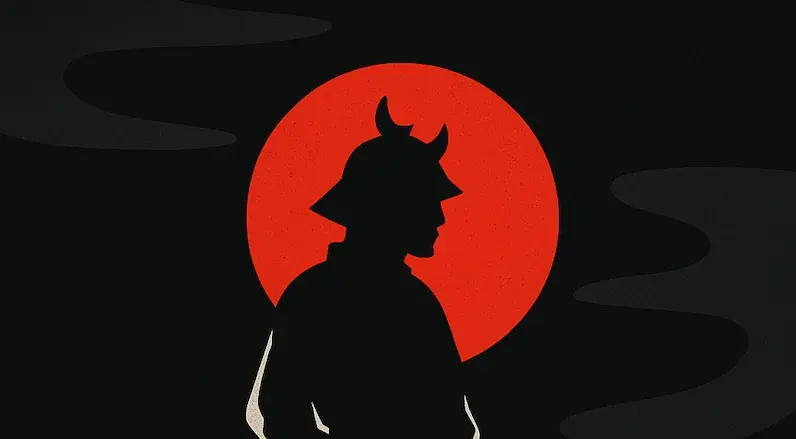4. Fact or Fiction: How SHŌGUN Reimagines Japanese History
While SHŌGUN captivates audiences with its gripping storylines and striking visuals, it also raises an important question: how much of what we’re watching is grounded in historical fact—and how much is pure dramatic invention?
This section unpacks some of the key departures and accuracies in the series, revealing where the story closely mirrors the political and cultural reality of 17th-century Japan, and where it diverges for the sake of narrative momentum.
⚔️ The Setting: A Nation on the Brink
Real: The year 1600 was indeed one of Japan’s most pivotal turning points. The series captures this moment of political instability, when power was split among feuding warlords following the death of Toyotomi Hideyoshi, with the Battle of Sekigahara looming as the decisive clash.
Dramatized: While the power vacuum and factional tension are historically accurate, the names, factions, and personal dynamics are fictionalized. The Eastern and Western armies are not mentioned by name, nor is the actual battle depicted.
🧭 John Blackthorne’s Journey
Real: Blackthorne is based on William Adams, an English navigator who was shipwrecked in Japan and eventually became a trusted advisor to Tokugawa Ieyasu.
Dramatized: The intensity and pace of Blackthorne’s integration into Japanese society is heightened for dramatic effect. In reality, Adams’s acceptance by the shogunate took place gradually over several years—not in the matter of weeks or months as suggested in the series.
🏯 Toranaga’s Rise to Power
Real: Lord Yoshii Toranaga is modeled on Tokugawa Ieyasu, who famously outmaneuvered his rivals to become shogun. His political cunning and patient strategy are accurately portrayed.
Dramatized: Some of Toranaga’s interactions, such as his direct conversations with Christian priests or elaborate schemes involving court women, are narrative inventions. These serve to dramatize Ieyasu’s subtle diplomacy and long-game tactics.
✝️ Christianity and Persecution
Real: The series reflects the real religious tensions of the time. Christianity, initially welcomed by some daimyo for its trade benefits and novel worldview, gradually came under suspicion by Japan’s ruling elites. A key turning point occurred in 1587 when Toyotomi Hideyoshi issued the Bateren Tsuihōrei (Edict Expelling the Missionaries). His growing concerns were sparked by reports—and likely firsthand observations—of Japanese citizens, including children and the poor, being taken or sold abroad by Christian traders, especially Portuguese slavers operating under missionary cover. Hideyoshi saw this as a potential precursor to colonial domination, akin to what had happened in the Philippines. The fear that missionaries were undermining Japan’s sovereignty under the guise of religion became a central justification for the crackdown.
Dramatized: Some depictions of torture, martyrdom, and widespread Christian practice may be amplified or condensed for emotional impact. Nonetheless, the overall trajectory toward persecution is historically sound.
🎭 Mariko and the Role of Women
Real: Lady Toda Mariko draws inspiration from Hosokawa Gracia (1563–1600), a Christian convert and the daughter of Akechi Mitsuhide. As the wife of Hosokawa Tadaoki, she held a politically significant position during one of Japan’s most volatile eras. In 1600, on the eve of the Battle of Sekigahara, Western Army leaders sought to take her hostage in Osaka to coerce her husband, who had sided with Tokugawa Ieyasu. Rather than become a pawn in political power plays, Gracia chose to die by ordering a loyal retainer to kill her and set fire to the residence. Her dramatic self-sacrifice became a legendary act of resistance and honor, underscoring both her Christian convictions and the severe limitations placed on noblewomen of the time.
Dramatized: Mariko’s role as both spiritual guide and emotional fulcrum is enhanced for narrative weight. Her tragic arc reflects themes common in historical fiction, even if her real-life counterpart’s fate was different in detail and timing.
🧩 Why It Matters
The beauty of SHŌGUN lies not in documentary-level precision, but in how it distills truth through fiction. It introduces global audiences to the architecture of Japanese feudal society, its rigid codes of honor, religious tensions, and the breathtaking complexity of its politics.
By understanding where the line between fact and fiction is drawn, we don’t weaken the story—we enrich it.
